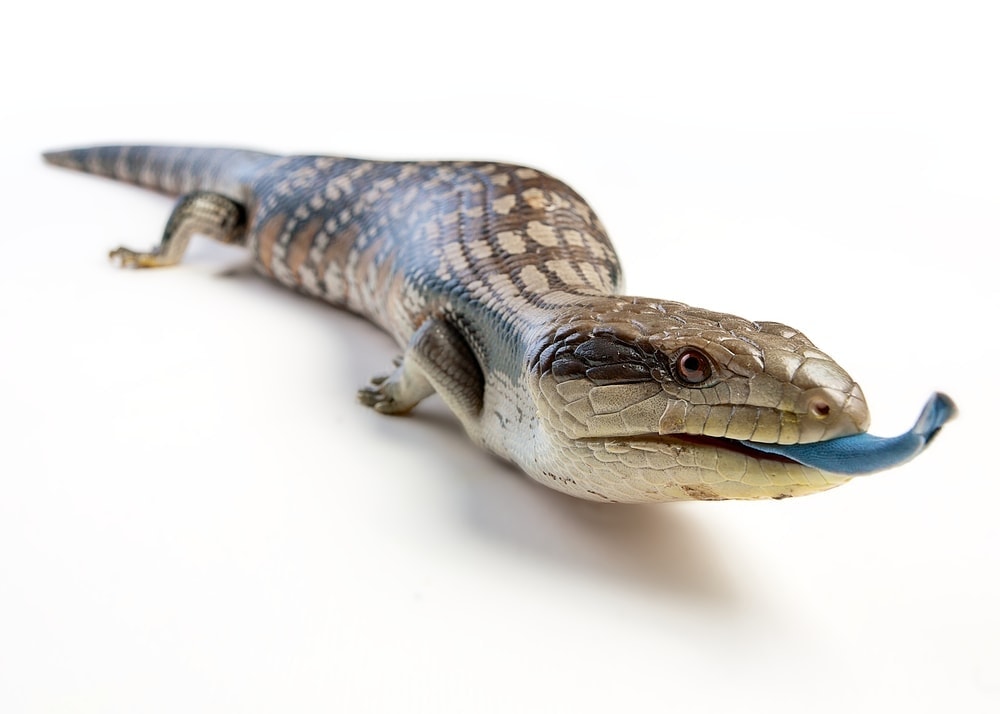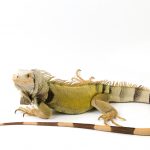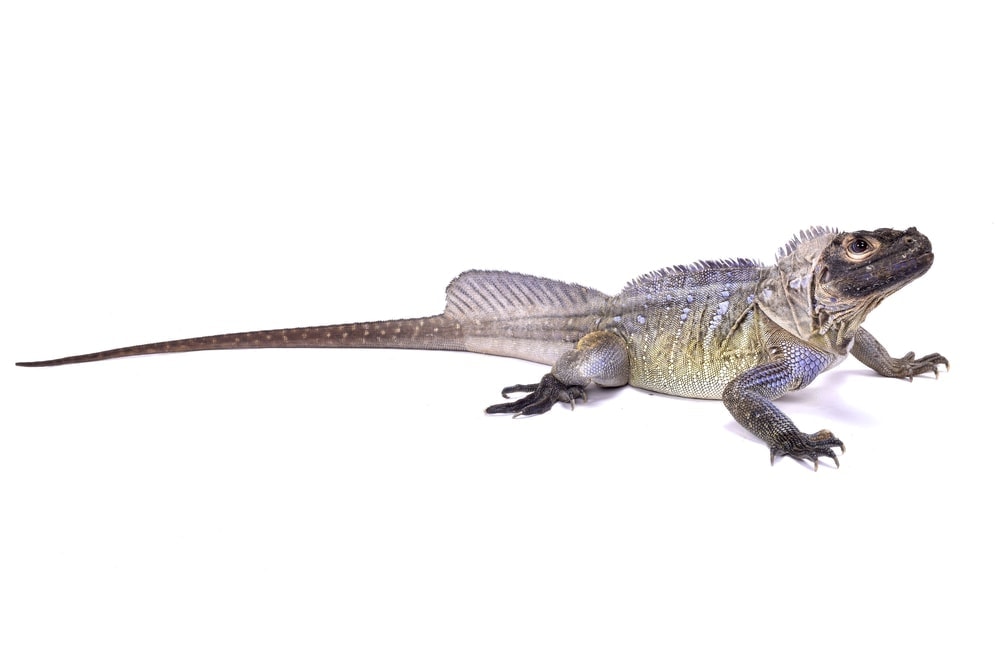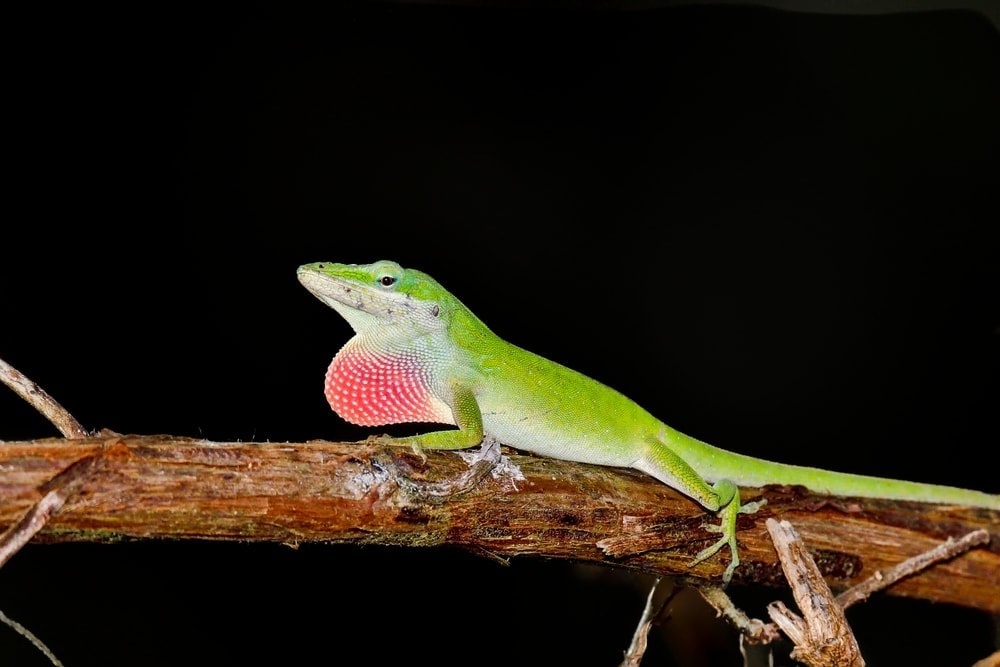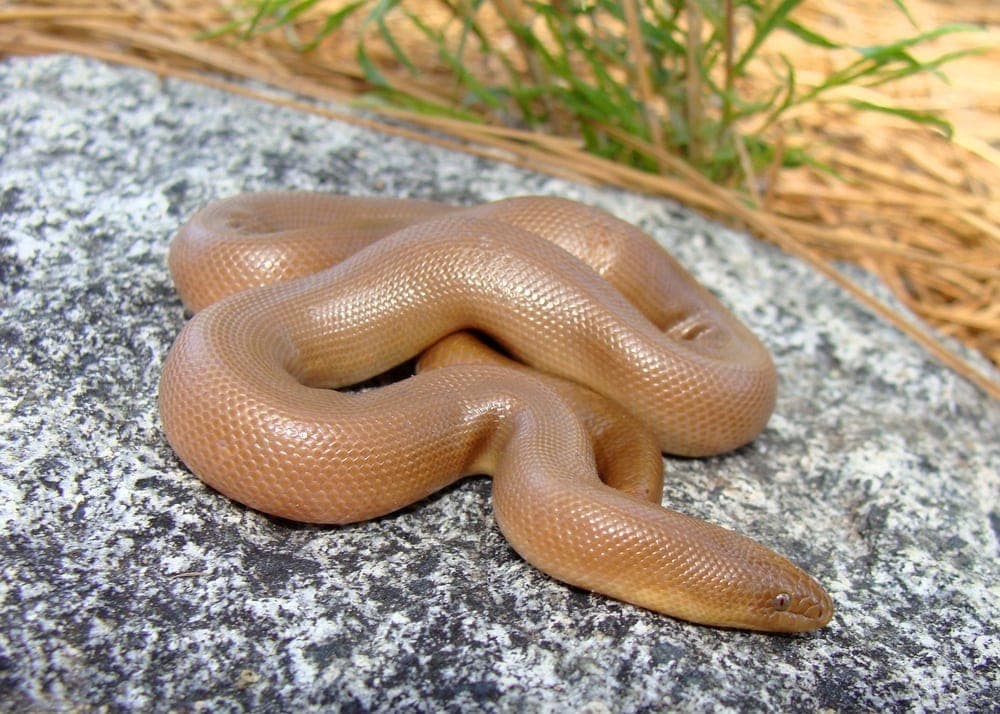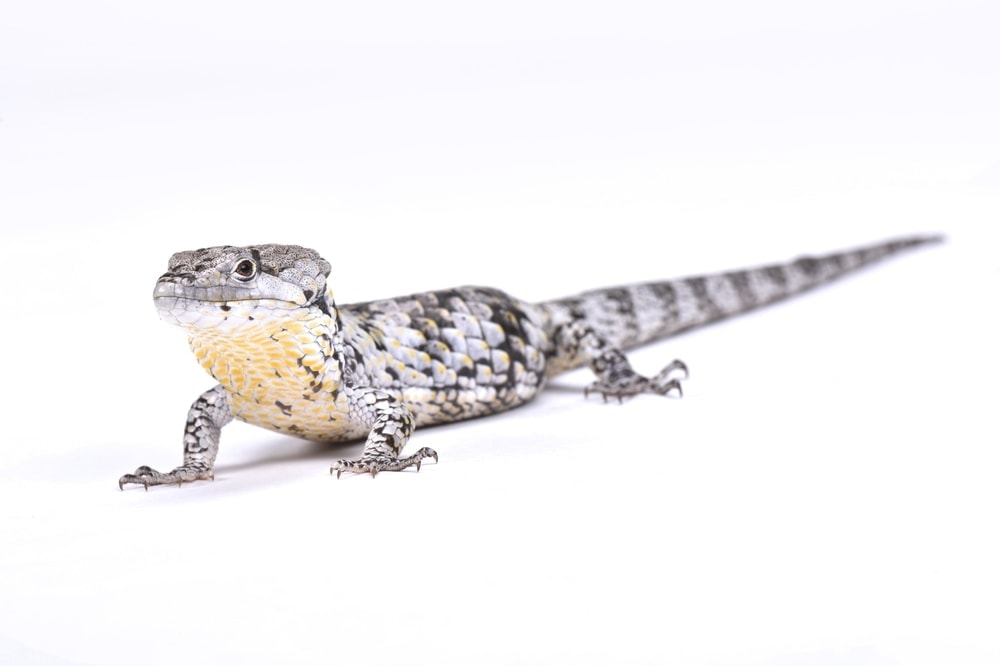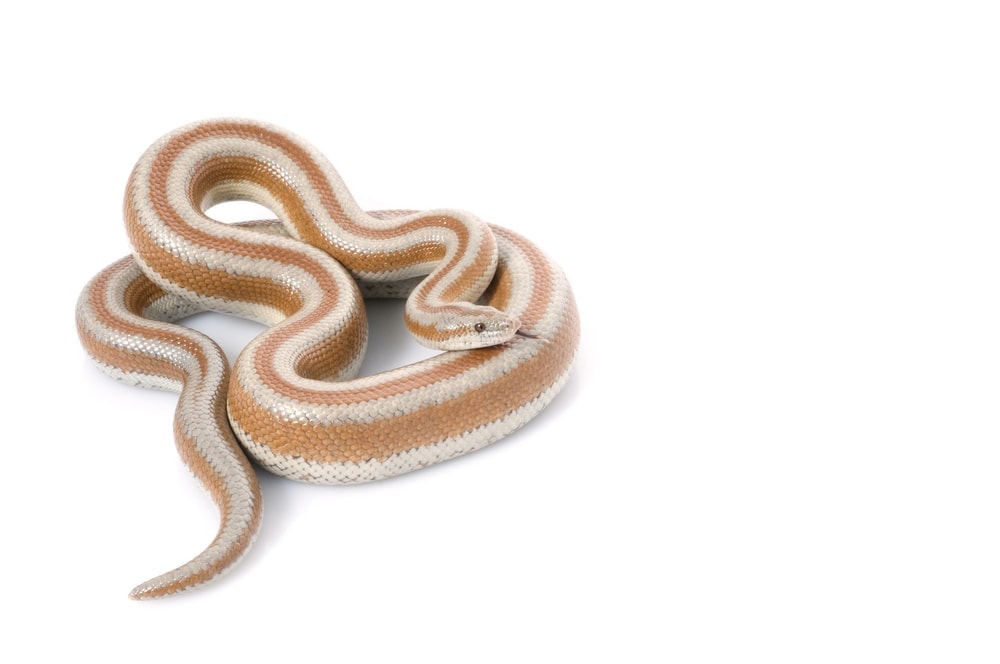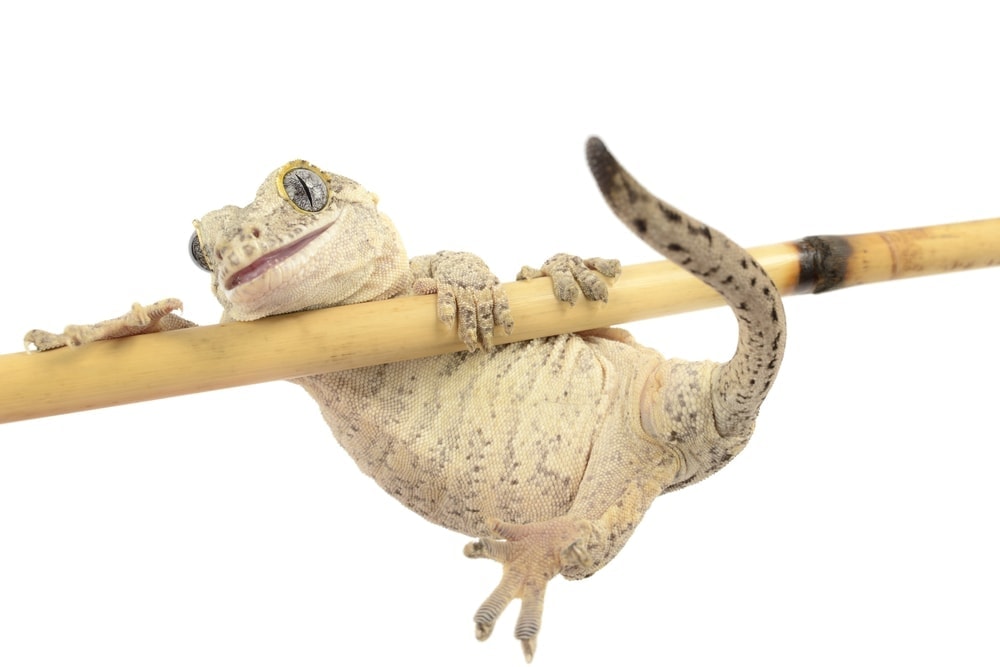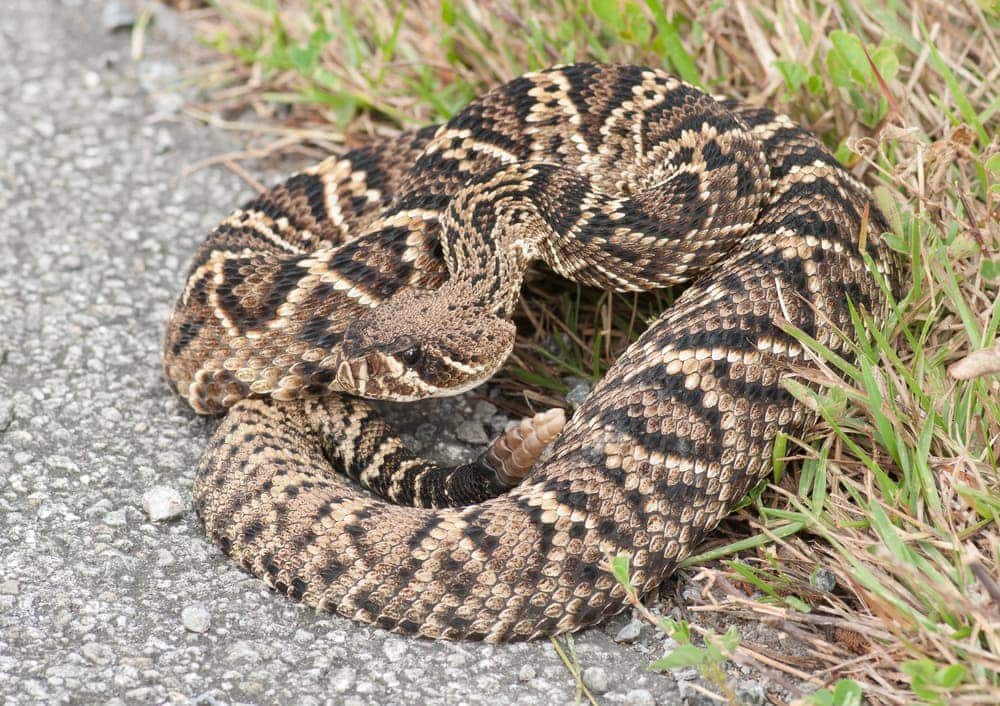Bluetongue skinks are native of Australia and Indonesia. They have a triangular head, torpedo-shaped body, short legs, and a blue tongue!
They use their blue tongues to scare their predators. Besides their beautiful blue tongue, they entice you with their eyes; if you go close to them, they will look you into your eyes and melt your heart.
Did you know that the blue tongue skinks can detach their tail as a defense mechanism, and their tails can regrow? They look like giant lizards and are easy to handle and can be good pets for beginners and kids.
Blue Tongue Skink Care Guide
Bluetongue skinks can grow up to 15-24” in size. The babies would require a 10-gallon aquarium, and the fully grown adults would need a 40-55 gallon aquarium.
The blue tongue skinks are best kept alone. If you choose to keep two females together or a male and a female together in one enclosure, watch out for any fights between them. Two males, however, can never be housed together.
1. Temperature and Lighting
The temperature of the enclosure should ideally be maintained between 75 – 85 degrees Fahrenheit. They would additionally need a basking area with a temperature of 90-95 degrees Fahrenheit.
Provision should be made to have a warm end and cold end in the enclosure, so when the blue tongue skink feels too warm, it can move to the cold end. It can be achieved by having an under-tank heating device or an overhead basking light or heat emitter on one end. The night temperature of the enclosure also should not fall below 70 degrees Fahrenheit.
The blue-tongued skinks like low humidity, so make sure to provide tanks with adequate ventilation.
Like most other diurnal species, blue tongue skinks also need a full spectrum light. Active UV bulbs or special fluorescent bulbs which also provide heat may be the right choice.
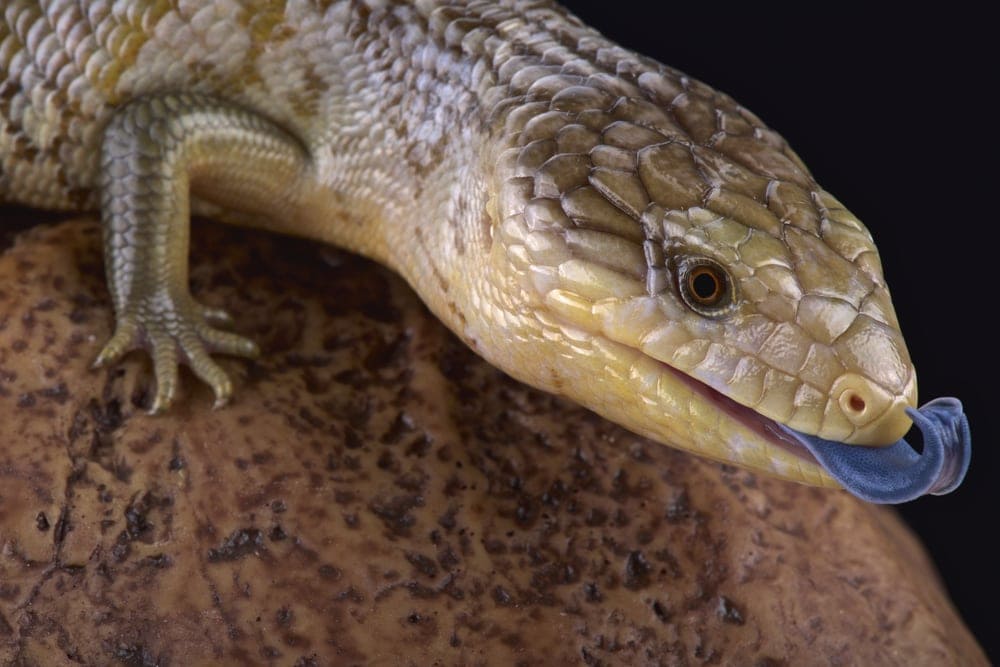
2. Substrate and accessories
Choosing the substrate for the enclosure is another crucial factor. Accidental swallowing of a substrate could lead to health problems. The ideal substrates would include recycled paper, the bark of fir, and cypress mulch. Substrates like cedar chips, orchid bark, walnut shells, and clay cat litter should not be used as it could cause toxicity. Clean the substrate of any fecal matter daily. The enclosure should be cleaned inside out every month.
The blue tongue skinks love to climb over rocks and logs, but stacking too many and too high may not be a good idea as they may suffer a fall. They love to explore their area, so make sure to have some free space and not clutter them with unwanted decorations.
3. Blue Tongue Skink’s Diet
The blue tongue skinks can live on any diet, but a balanced healthy diet can keep them active. They are omnivores and should be fed a combination of proteins, fruits, and vegetables. A diet comprising of 50% of vegetables and greens, 40% of meat and 10% of fruits can be ideal.
Please note the following food is best avoided – eggplant, mushrooms, avocado, citrus fruits, rhubarb, seafood, and canned meat/food, which have a high content of sodium. Adult blue tongue skinks feed every 2-3 days.
Growing blue tongue skinks should be fed every day to grow healthy. The blue-tongued skinks may lose their appetite during winter months, or they may not feed at all. It is normal and not a cause for panic. But do offer food every day, for they may suddenly decide to binge.
A shallow bowl of clean water should be available in the enclosure. Do remember that the blue-tongued wonders are not great swimmers and so they should be able to feed and leave. Also, take care to ensure that the water container should not fall off easily.
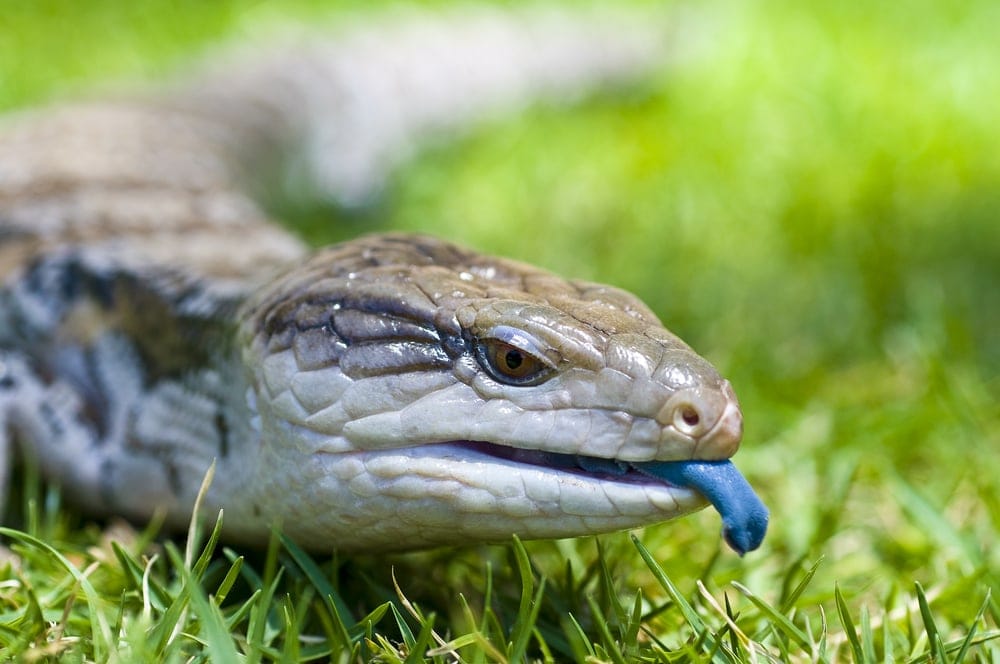
4. Handling the Blue Tongue Skink
One must exercise caution while handling the pet blue tongue skinks. Initially, one must handle them only for around 10 minutes. During this time also they must be held close to the floor or bed, to avoid a bad fall. Once they get more comfortable with, you can handle them for longer durations. It also depends on how much time your little blue tongue skink likes to spend with you! Some of them enjoy all the attention and wish to be petted on the head and the chin. They would love to hang around with you and laze quietly with you.
Like babies, blue tongue skinks also need to have their nails cut regularly. Failure to do so could result in the nails curling inward, which will make it difficult for the blue tongue skink to walk, and it might hurt itself. Be careful while you clip the nails, lest you end up hurting your little pet.
Metabolic bone disease is one of the common health problems they suffer from. It is caused by poor UV lighting or due to a poor diet. They may have weakness, fractured bones, or may feel lethargic because of this. The blue tongue skinks may also suffer from Vitamin deficiency; this can be corrected by giving them supplements. If your pet skink is not shedding its skin like other reptiles, this could also highlight a health problem.
Blue Tongue Skink Price
The blue tongue skink can cost between $150 for babies to about $250 for adults. Certain rare forms like the Centralian and the shingle banks could cost you anywhere between $1500 to about $3000. The price for the enclosure and lighting could also cost you between $500-$700. Keep in mind this preliminary additional cost, too, before you decide to get home the pet skink.
These adorable docile blue-tongued reptiles are sure to win your heart. When taken care of well, they can be your companion for well over 10-15 years. They can be quite friendly and may amuse you with their antics. They make great pets, and now that you have all the pet care tips, you are all equipped to get one of these rare pets.
